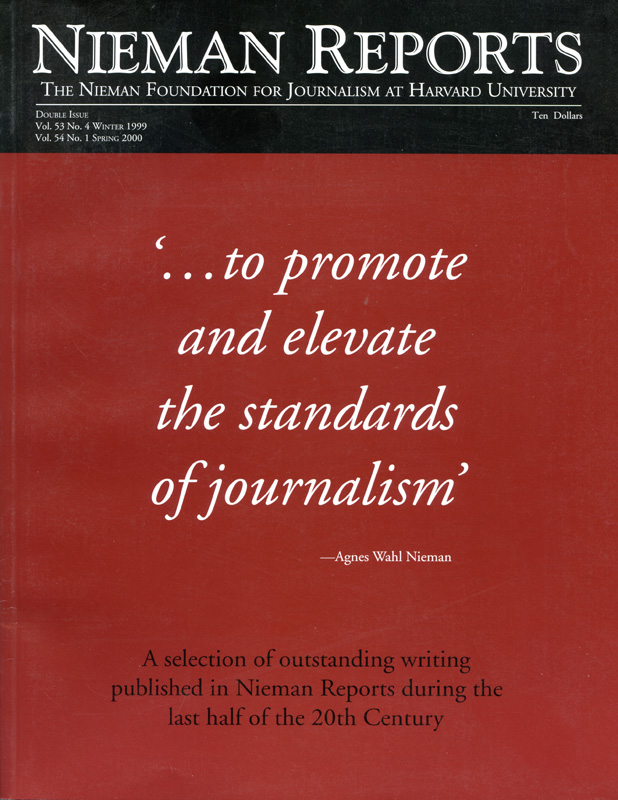
Foreigners have long believed that the Mexican government controls the press through the sale of newsprint by a company the government owns.
Are they right?
Wrong.
Foreigners have long believed that the Mexican government imposes direct censorship on the press.
Are they right?
Wrong.
Foreigners have long believed that the Mexican government exercises an overwhelming power to suppress or publicize any news or opinion it wants.
Are they right?
Again, wrong.
Conclusion: There is a free press and freedom of expression in Mexico.
Right?
Once more, wrong.
Let’s see:
Freedom of expression is protected under the Mexican Constitution. Freedom of expression is widely respected in Mexico; you can talk freely without fear of ending up in jail. You can criticize government officials and institutions. As long as you don’t insult them, you don’t break the law to criticize them, and the civil order is maintained, you will be fine.
Nevertheless, that doesn’t mean Mexicans enjoy a free press or freedom of expression. The issue of freedom of the press in Mexico is complex in many ways.
There are no censors in Mexican newspapers, but there is censorship anyway. The tool mostly used for suppression of ideas and thoughts is not government censorship but the greater evil of self-censorship.
The Mexican press is never the bridge between those who govern and those who are governed. The Mexican press is not the mirror of the society but the means through which elites communicate with each other. Most of the Mexican press is not responding to the people’s needs and demands, for the press is far from them. The Mexican press has turned itself into a microphone reserved for the powers that be. It’s deaf to ordinary people.
Still, the newspaper business in Mexico is a great business.
Million in Profits on 5,000 Circulation
Take, for example, the case of a newspaper in Mexico City with a daily circulation of 5,000. The newspaper confidentially reported a profit of almost one million dollars in the first quarter in 1989. How could that be possible? How could that newspaper, calling itself a “national newspaper” with over 250 employees, be a profitable operation?
It is not magic. It is not witchcraft. It is not a very capable administration. It is Mexico.
That newspaper is one of almost 250 newspapers in Mexico that get most of their revenues from government advertising. The government and many Mexican politicians buy space—in the form of news stories—in the newspapers to reproduce speeches or publicize their actions. But the newspapers never advise their readers that what they read is paid propaganda. Readers may think they are reading a news story, when in fact, it is not. The government, the politicians, and a growing number of companies and businessmen pay to print propaganda in the disguise of news information. Politicians can buy almost everything they want.
Newspapers even sell space on the front page. They used to call those spaces “100 agate lines,” meaning they would sell two paragraphs, plus headlines and subtitles. The average cost for that space is around U.S. $30,000. Political advertising is more expensive than commercial advertising. If the political ad is placed late at night, it may cost up to 90 percent more.
Mexican readers are continuously cheated by this practice. It is normal for someone to read in a Mexico City newspaper that the governor of a remote northern state dedicated an elementary school. Or that the governor of another state sent the Mexican President a greeting because of his last trip overseas. Or that a top official gave a speech to an unknown organization. Or that the wife of a cabinet minister began the annual Red Cross campaign.
Who really cares? Only politicians, for they work for themselves and their bosses, not for the people. That is part of the unique Mexican political system, where the press plays all roles except to serve the people. Needless to say, Mexicans are reading fewer and fewer newspapers. According to circulation figures released by an advertising organization in 1990, the 25 Mexico City newspapers had a combined circulation of 2,916,625 copies a day. Raul Trejo Delarbre, a Mexican media researcher, said in a magazine article in 1990 that the combined circulation was in fact, only 731,000. Both estimates included sports and sex and scandal newspapers, which account for almost half of the total circulation in each survey.
Ten out of those 25 newspapers consider themselves “national newspapers.” They are what people call “major” newspapers. Their news articles and opinion pages are said to shape public opinion. That is not so. Most Mexicans don’t read these “major” newspapers. The combined circulation of the largest 10 is 279,000 copies a day, according to Mr. Trejo’s survey. Today, only one of those carries almost no government advertisements. In fact, fewer than a dozen newspapers in the country are published with little government advertising.
Withdrawal of Ads Would Kill Papers
If the government were to withdraw its advertisements from newspapers and magazines, most of them would die. Four of those “major” newspapers have a daily circulation of less than 10,000 copies, and two print no more than 20,000 copies a day. Only two print more than 65,000 copies a day.
Indeed, Mexican newspapers do not really inform the general public. Most of the Mexican people get their information either from the radio or from the TV. What the written press has to say is not among their main concerns. Mexican newspapers do not shape political opinion or build consent. Mexico City newspapers do not even reach six percent of Mexico City’s population. Their praises, their criticisms, are largely unknown by many Mexicans. Most of Mexico City’s newspaper readers are among the educated elite. The written media in Mexico serve as a form of mail, as a channel the elite use every day to exchange messages. They criticize each other in the print press and they respond to each other in the same manner. Newspapers do not have to prove that their circulations are as high as contended because they rely on government advertising. Thus most of them do not rely on commercial advertising for revenues. In the process, newspapers and journalists are vulnerable to coercion and political blackmail.
Three Presidents Acted Against Papers
Officials may threaten to withdraw advertisements if the newspaper or the journalist refuses to print what those officials want to get in print—or more often, refuses to suppress what they want to suppress. President José Lopez Portillo halted government advertising that was vital to two magazines, Proceso and Critica Politica, because they were critical of his policies, in the early 1980’s. Proceso managed to survive by getting commercial ads but Critica Politica folded. President Miguel de la Madrid withdrew all government advertisements from the newspaper El Financiero because officials disliked the way the newspaper covered the debt agreement negotiations. President Carlos Salinas de Gortari followed suit and decided not to include a reporter of the newspaper in any of the presidential trips, except one, in October 1989. However, El Financiero kept publishing by selling commercial advertisements.
In most other cases, editors and reporters follow the official line. Reporters count on commissions they get for each government ad they bring in. Reporters compete with each other in newsrooms to get the richest beats—rich not in information but in political propaganda, because that is the main source of their income.
Publishers pay between five and 12 percent commission to reporters. That is why they also get away with low salaries for journalists. Commercial advertisements are usually handled by the advertising department.
Since the concept of conflict of interest doesn’t exist in Mexican journalism, this widespread practice is not seen as unethical by many. Indeed, many journalists think of this practice as a legal way to increase their income. No existing law prohibits it. It is legal, but it is not legitimate. Officials promote and support this practice because they are better able to control the information.
Political ads are not the only way to enforce censorship. Officials favor benefits for journalists. The most widely known is the kickback, called in the Mexican journalistic jargon “embute” or “chayote.” Kickbacks are usually delivered to journalists in closed envelopes. Press officers and politicians refer to them as a “help” for journalists’ salaries. Those kickbacks may be given on a monthly basis for a reporter covering a beat, or in trips made by Mexican officials. The amounts are different, according to the beat, the reporter, or the news organization he or she represents, but could go from a low U.S. $20 a month up to U.S. $1,500.
A presidential spokesman used to boast that his office had cut off that practice and no longer gave money to journalists. He was right only technically. For the Presidential Press Office staffers still ask top politicians to give money to the journalists accompanying the President wherever he goes.
Although it is not known whether President Salinas de Gortari knows about the practice, one can hardly believe he is not aware of it. In any case, high government officials have closed their eyes to this practice.
Private Companies Give Kickbacks, Too
The same phenomenon happens to editors. They all know about it, but they let reporters take the money as another way to compensate for low salaries. Nevertheless, in several cases editors and publishers have fired reporters when taking the kickback became public. Kickbacks are already institutionalized, and a number of private companies do the same with journalists and they pay for space to promote their product, in the guise of news information.
How much money the government spends every year in propaganda published as news stories or kickbacks nobody really knows. However, some figures might give a slim idea of what we are talking about. The press and propaganda budget for the state of Chiapas, one of the poorest states in Mexico back in 1989, totaled U.S. $4 million. The fifth largest press and propaganda budget, for the state of Mexico, was U.S. $11.6 million the same year. Those budgets have since been cut down in the last two to three years, but the uncontrolled kickbacks have not been. Politicians may give new model cars to journalists, or they may pay for a European holiday for the journalist and family. In one case, one state governor paid U.S. $20,000 to an editor to kill a negative story about him.
Press controls vary in many different ways. Editors and reporters are sought by politicians to help them, and they hire them as public relations consultants, without the journalists resigning their jobs. A former Mexico City General Attorney decided not to give cash to journalists, but his office helped any journalist who asked to get people out jail. Although the help was restricted to minor criminal offenses, the former General Attorney office’s provided that kind of service twice a month, so the journalist could charge the prisoner’s family for the services rendered. In another case, a top official in the Secretariat of Communications got an eight-column banner on the front page of one of the major newspapers in exchange for a telephone line.
More Journalists Rejecting Practice
It would only be fair to say that every day there are more and more publishers, editors and reporters who are rejecting this kind of relationship with the Mexican government. The Mexican press was the only institution that did not change after the highly contested presidential elections in 1988. All the rest of Mexican society was shaken up. Every institution began to move, even the most stubborn to change. The press, as an institution, remained isolated from change. Now, for the sake of its survival, the press has to come to grips with the new Mexico.
Rank and file journalists are pressuring from the inside for changes. Increasingly there are better educated reporters with a different sense of what journalism should be. Still, they are in the minority. A generational change is coming. How fast will that change be? How deep a change can it produce? It is hard to tell.
Those wanting reform face the challenge of the government. Will the government put its house in order? Will the government cancel political ads, favors, kickbacks? Will the government allow a free press as a rule and not as an exception? If the government is to change, it will face a scenario where most of newspapers and magazines will disappear, and the ones that survive will begin a fiery struggle for the market. Journalistic quality will improve as well as independence from the government. Top officials will no longer be able to manipulate the press.
The balance of power would change and the press then could check on government performance. That would be a major step for democracy in Mexico. Unfortunately, I can not foresee that outcome in the near future. I can see the rule of the majority over the will for a change. Moreover, I can see the Mexican press as the last institution that will turn democratic in Mexico.
Raymundo Riva Palacio, a former editor of El Financiero International Edition, published every week in English, writes about politics for El Financiero. He also writes on the Mexican media and is working on a book on that subject. He was a correspondent in Washington, Madrid, Paris and Central America. This article is a revised version of an article he wrote for the San Antonio Light. He is a 1992 Nieman Fellow.


